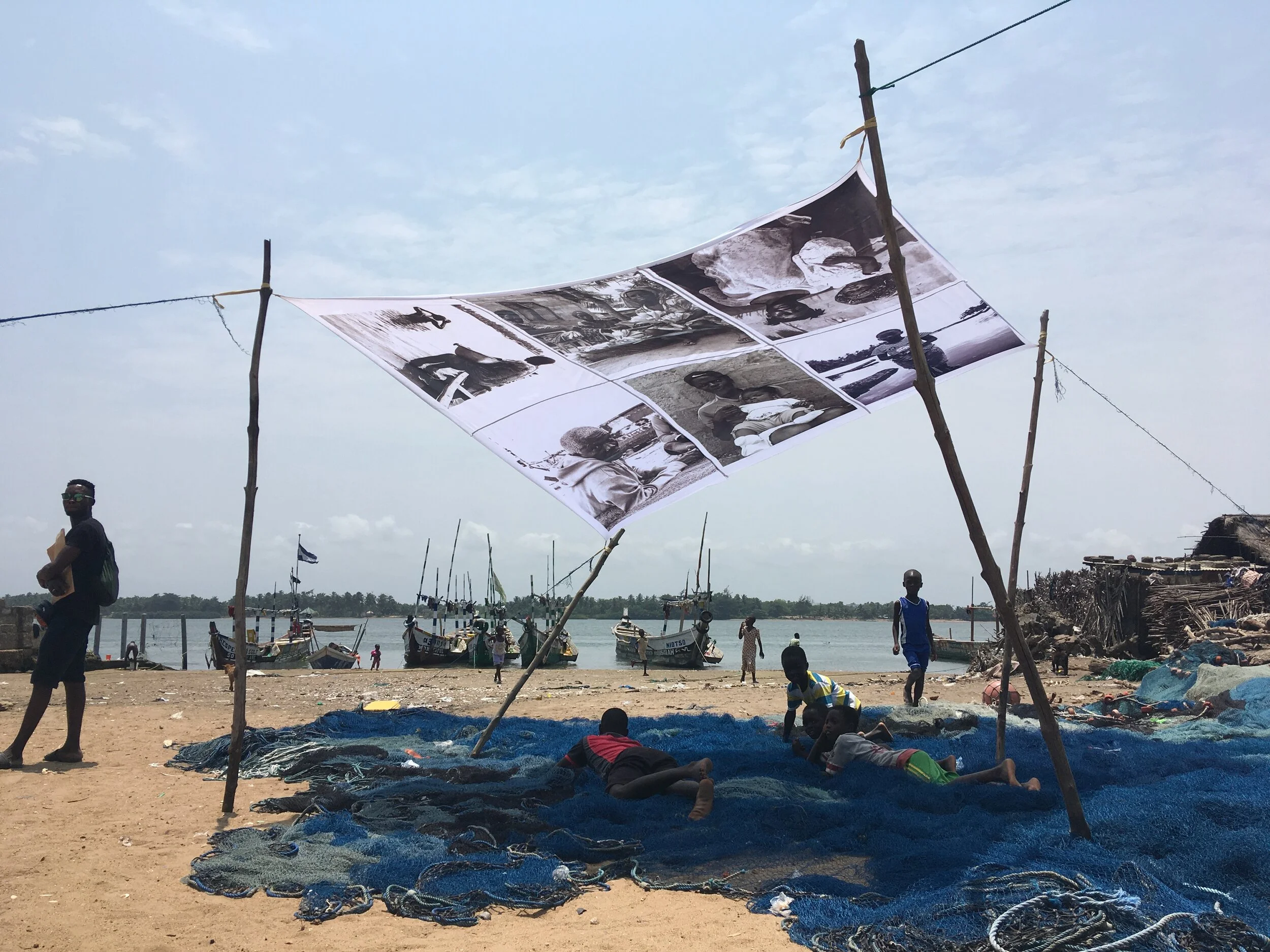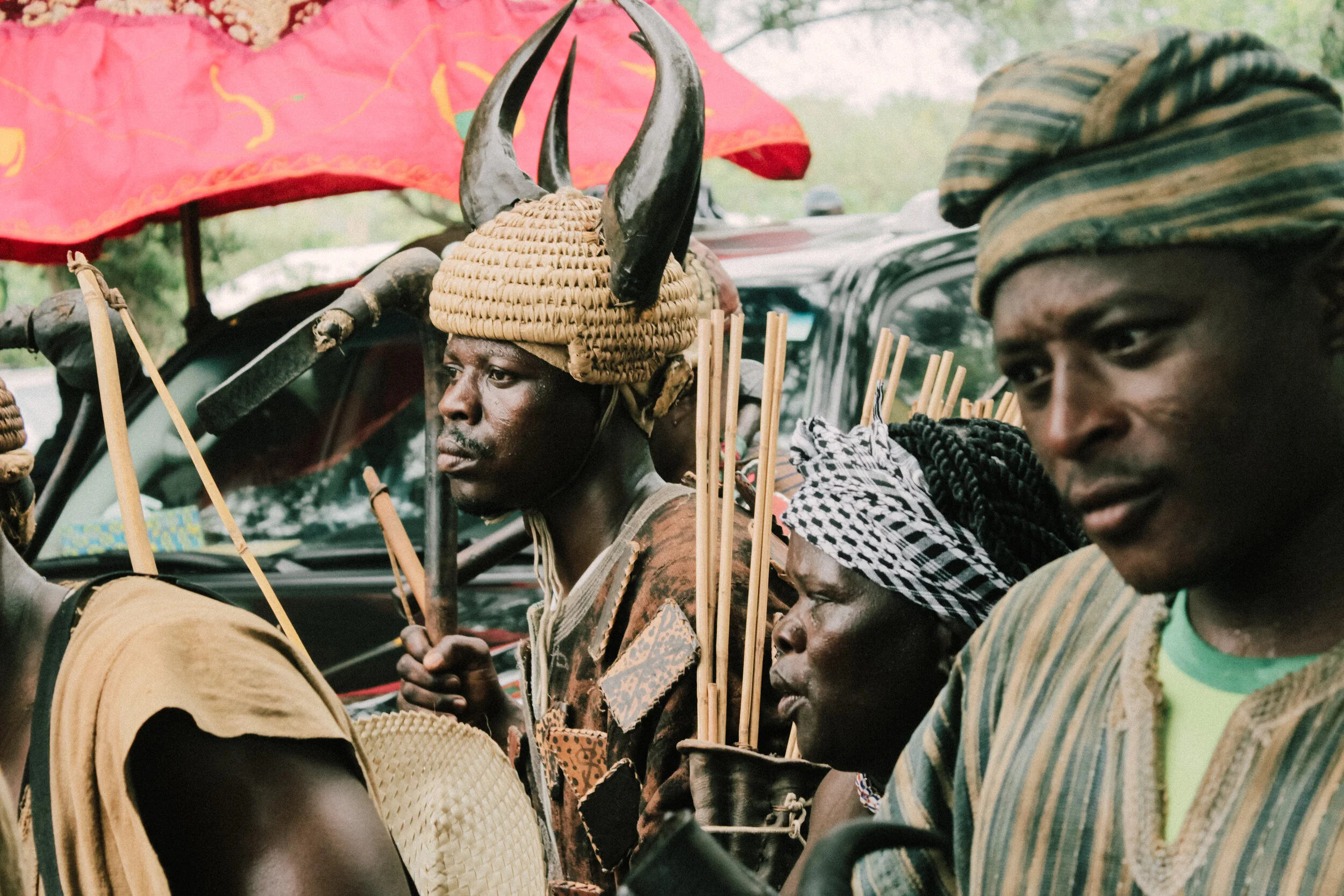More than a year ago, Ofoe Amegavie set out to document the lives of the people of Azizanya and Kewuno, a fisherfolk close to Ada-Foah on Ghana’s coast about 100km East of Accra.
His particular interest as a photographer and visual storyteller in these communities is anchored in his own family history. The family has been living in Ada-Foah for decades.
Since a few years, Ofoe has been observing some of the challenges the communities have been going through – related to the impact of environmental conditions and tourism – which have become a major focus of his photography.
He started talking to the people about their daily lives and how they deal with challenges such as land loss and floods due to coastal erosion or expansion of touristic activities.
He discovered that despite all hardships, these are highly resilient people who try to continue to live in harmony with nature and their spiritual ancestry.
He discovered women being at the forefront of sustaining and nurturing their families by working several jobs side-by-side, from selling in the market, to running local businesses, to catering and taking care of their loved ones and community members.
He discovered proactive individuals who engage in protecting, preserving and restoring their environment together with local organisations, for example through re-planting of mangroves, the ecosystem that is key in the survival of the coastal towns, or through beach clean-ups.
He discovered a wealth of knowledge in the elders who carry in themselves the history and the spiritual wisdom of generations.
He discovered local youth groups advocating and fighting for their land and thus their livelihood.
He discovered that everyone across generations plays an important role in this tight ecosystem between sand and water.











More than one year ago, he walked about the communities of Azizanya and Kewuno, envisioning possibilities to amplify the voices and stories of the people dear to his heart. He had collected many of them, and hundreds of photographs started filling up his archive. He felt it was time to bring these stories back into the communities.
The right occasion presented itself with the Asafotufiam festival, the annual celebration that attracts thousands of visitors from across Ghana and beyond to come to the otherwise quiet and peaceful ocean towns.
He dreamt up and realised a photo installation that drew inspiration from the fisherfolk. He printed his photographs – black and white portraits and scenes of daily life – on fabric usually used for flags. With the help of his friend Moza, a young fisherman from Kewuno, the flags were mounted on coconut trees in the community. A local tailor sewed some flags together into abalas, a shed the fishermen use for shelter from the scorching sun when mending their nets or taking a rest from the hard labour. And in the fashion of local advertising through posters, the attention of festival visitors was drawn to the instillations in an invitation to make their way to the communities to not only watch the installations but also to witness first-hand the “unique situation of the people of Azizanya and Kewuno, as we see them today and as their future is uncertain,” in the artist’s own words.
Ofoe exploring the mangroves around the Volta Delta
One year on, Ofoe has collected more stories and wisdom through immersing himself more in the community life and activities. Stay tuned, as he continues to explore life “Between Sand and Water” as a fellow of the World Press Photo’s West Africa Visual Journalism Fellowship.



































